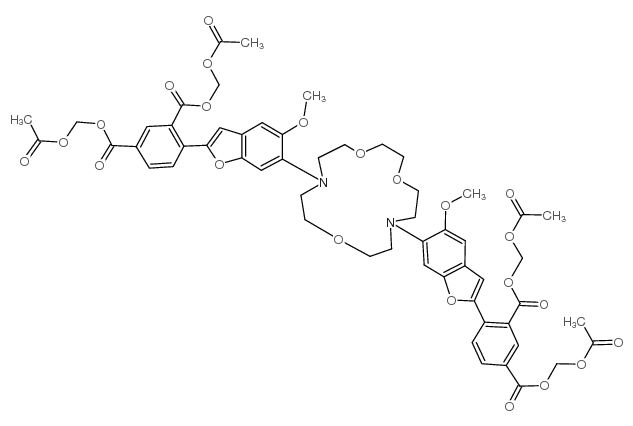SBFI-AM

SBFI-AM structure
|
Common Name | SBFI-AM | ||
|---|---|---|---|---|
| CAS Number | 129423-53-6 | Molecular Weight | 1127.06000 | |
| Density | 1.311g/cm3 | Boiling Point | 1110.3ºC at 760 mmHg | |
| Molecular Formula | C56H58N2O23 | Melting Point | N/A | |
| MSDS | USA | Flash Point | 625.3ºC | |
|
Synthetic ion transporters can induce apoptosis by facilitating chloride anion transport into cells.
Nature Chemistry 6(10) , 885-92, (2014) Anion transporters based on small molecules have received attention as therapeutic agents because of their potential to disrupt cellular ion homeostasis. However, a direct correlation between a change in cellular chloride anion concentration and cytotoxicity ... |
|
|
A neutrophil intrinsic impairment affecting Rab27a and degranulation in cystic fibrosis is corrected by CFTR potentiator therapy.
Blood 124(7) , 999-1009, (2014) Studies have endeavored to reconcile whether dysfunction of neutrophils in people with cystic fibrosis (CF) is a result of the genetic defect or is secondary due to infection and inflammation. In this study, we illustrate that disrupted function of the CF tra... |
|
|
Cyclooxygenase 2 inhibitor celecoxib inhibits glutamate release by attenuating the PGE2/EP2 pathway in rat cerebral cortex endings.
J. Pharmacol. Exp. Ther. 351(1) , 134-45, (2014) The excitotoxicity caused by excessive glutamate is a critical element in the neuropathology of acute and chronic brain disorders. Therefore, inhibition of glutamate release is a potentially valuable therapeutic strategy for treating these diseases. In this s... |
|
|
Fluorescent indicators for cytosolic sodium.
J. Biol. Chem. 264 , 19449, (1989) Fluorescent indicators sensitive to cytosolic concentrations of free Na+ have been synthesized and characterized. They consist of a crown ether, 1,7-diaza-4,10,13-trioxacyclopentadecane, linked via its nitrogens to fluorophores bearing additional liganding ce... |
|
|
Phospholipid subclass-specific alterations in the kinetics of ion transport across biologic membranes.
Biochemistry 33 , 13769, (1994) Although the predominance of plasmalogens in electrically-active membranes (e.g., sarcolemma) is well-known, identification of the molecular mechanisms through which the vinyl ether linkage facilitates electrophysiologic function has remained elusive. Herein ... |